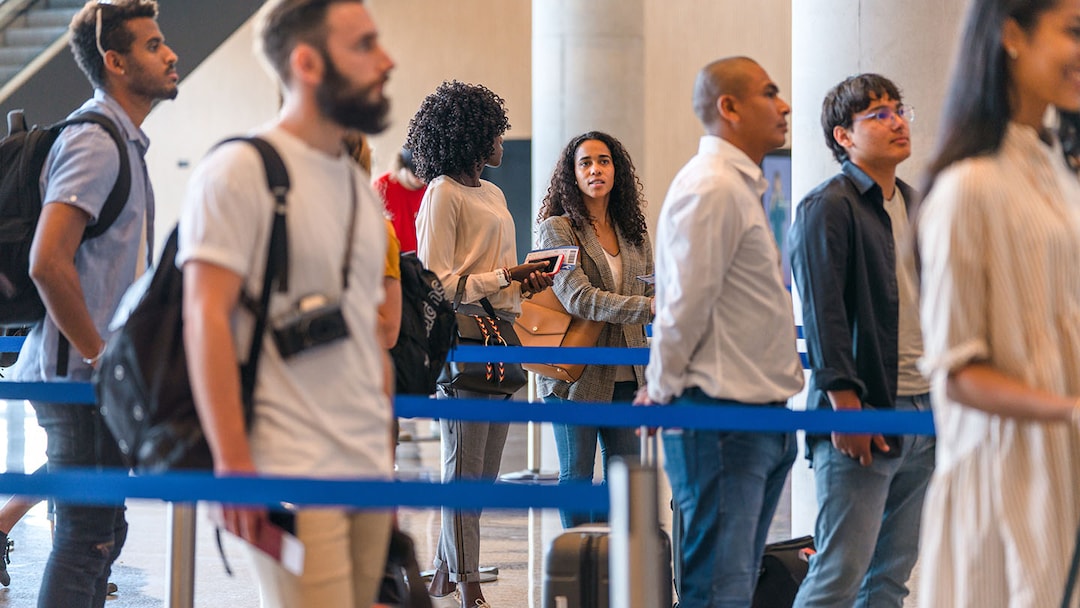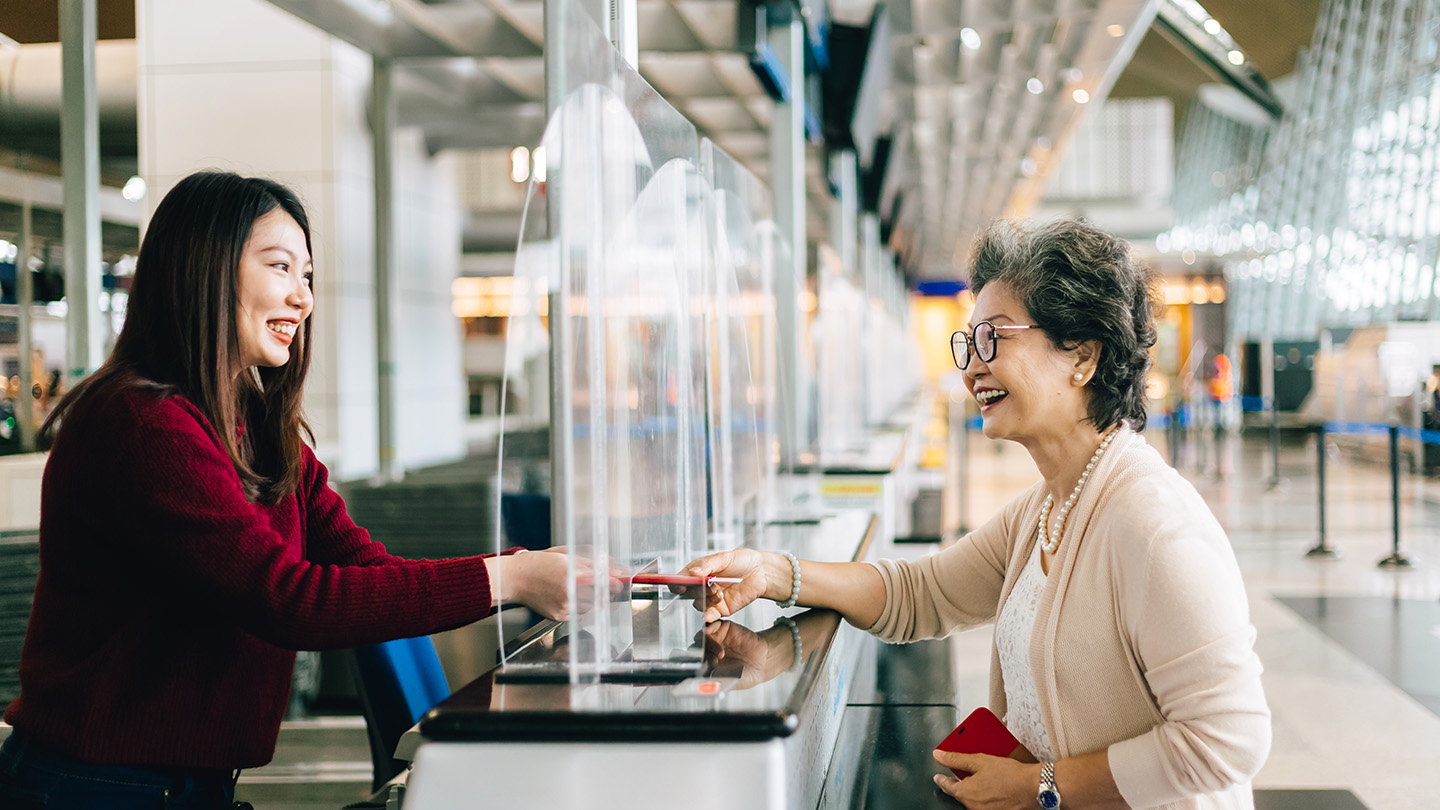Guide to TSA wait times

Quick insights
- The Transportation and Security Administration (TSA) is the agency that conducts airport security screenings.
- TSA wait times can depend on the airport, time of day, weather events and other factors.
- A few ways passengers can try to streamline the screening process include keeping an organized carry-on bag, using the MyTSA app or applying for TSA PreCheck®.
How early to arrive before a flight can be a source of debate. Among the many tasks airline passengers need to allow time for is the airport security screening. TSA wait times can be unpredictable—ranging from minutes to hours—which can make planning when to arrive at the airport a challenge for passengers.
In this article, we’ll cover factors that impact TSA wait times and how passengers may be able to ease the security screening process.
TSA and security screenings
TSA screens passengers and their luggage for prohibited items and other threats before they proceed to their gate at the airport. During a security screening, TSA agents conduct a:
- Carry-on baggage screening
- Passenger screening (pat-down or screening technology)
During the screening, passengers could be asked to remove their shoes, belts, jackets, liquids and electronics.
Typical TSA wait times
TSA doesn’t publish information regarding the average wait time at security screening checkpoints, but you may find that some airports report their annual averages.
The airport, time of day, day of the week, seasonal traffic, weather events and other variables can impact how long it takes to get through a checkpoint. Wait times may range from minutes to hours.
How to get through TSA faster
While there’s no way to know for sure how long it will take to get through a TSA security checkpoint, there are a few ways airline passengers may be able to help streamline their airport experience.
Prepare for the security screening
With some preparation, passengers may be able to facilitate a smoother screening process. According to TSA, passengers can ease the security screening by:
- Keeping an organized carry-on bag.
- Leaving banned carry-on items at home or in a checked bagged.
- Following the 3:1:1 liquids rule (a TSA carry-on restriction regarding how to pack liquids).
Your clothing choices could impact the time it takes to get through the security checkpoint. For example, during the screening, shoes with laces may take more time to take off and put on compared to slip-on shoes.
Check TSA wait times in advance
There are a few resources that provide data on TSA wait times:
- The departure airport’s website may provide information regarding TSA wait times.
- The MyTSA app gives access to historical data on estimated TSA wait times at U.S. airports.
Keep in mind that your wait time at the airport could be longer or shorter than the information reported in these sources.
Another option to help you manage your airport arrival time is to call the airline. Some airlines provide guidance on how far in advance of a flight to arrive. In many cases, passengers may sign up for notifications, which typically includes updates like flight delays.
Consider TSA PreCheck or Global Entry
Membership in Trusted Traveler Programs (TTP) like TSA PreCheck or Global Entry are designed to expedite the security screening process. Note that Global Entry and TSA PreCheck wait times vary, but generally, you may find that expedited screenings are faster than standard screenings.
Members usually don’t have to remove their shoes, jackets, belts, 3-1-1 liquids or laptops.
Some credit cards reimburse Global Entry and TSA PreCheck application fees when cardmembers use their card for payment. These credit cards may also allow you to earn travel rewards that could help your next trip happen sooner.
In summary
TSA conducts passenger and carry-on baggage screenings at U.S. airports. It can be hard to predict wait times at a TSA airport security checkpoint. For example, a checkpoint that routinely gets passengers through in under 15 minutes could have hours-long wait times in the event of widespread flight delays and cancellations.
Your airport’s website or the MyTSA app may provide information regarding average wait times, but this information doesn’t necessarily predict your TSA wait time. Following TSA rules and guidance or applying for a TTP like TSA PreCheck could help ease the screening process.
If you’re a frequent traveler, you may benefit from a travel credit card like the Chase Sapphire Reserve® card. Cardmembers are eligible for a statement credit when they use their card to pay for their application fee for TSA PreCheck®, Global Entry or NEXUS every four years. Note that the card has an annual fee.



